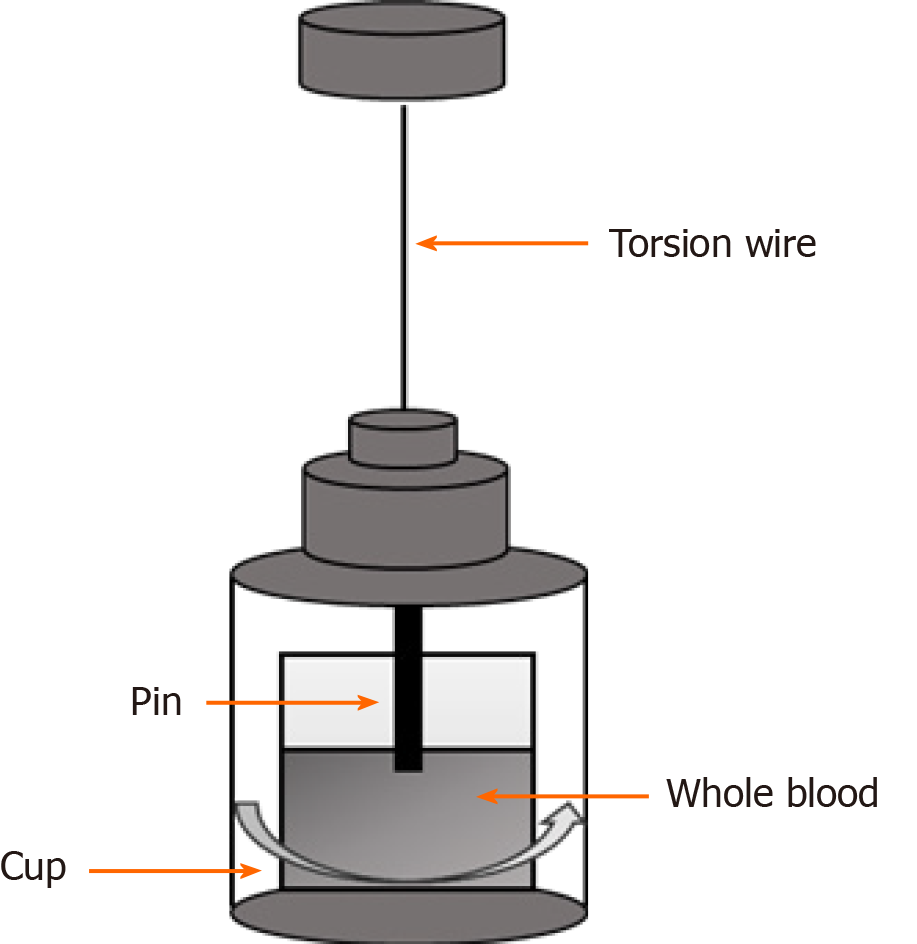Copyright
©The Author(s) 2020.
World J Hepatol. Nov 27, 2020; 12(11): 1115-1127
Published online Nov 27, 2020. doi: 10.4254/wjh.v12.i11.1115
Published online Nov 27, 2020. doi: 10.4254/wjh.v12.i11.1115
Figure 1 Technique of thromboelastography.
Whole blood is pipetted into a cup which then rotates around a pin. As clot forms, the resistance to rotation increases. This resistance is measured via an electromechanical transducer and displayed graphically with additional calculations performed by an integrated computer. Thromboelastography (TEG) was originally performed on non-citrated whole blood and required up to 60 min to complete. Citrated blood, re-calcified at the time of testing, is now commonly used and reduces the turnaround time to 30 min. Initiators of clotting such as Kaolin can also be added which further reduces test time. TEG has a faster turnaround time than conventional coagulation tests with initial results available within 10 min.
- Citation: Wei H, Child LJ. Clinical utility of viscoelastic testing in chronic liver disease: A systematic review. World J Hepatol 2020; 12(11): 1115-1127
- URL: https://www.wjgnet.com/1948-5182/full/v12/i11/1115.htm
- DOI: https://dx.doi.org/10.4254/wjh.v12.i11.1115









